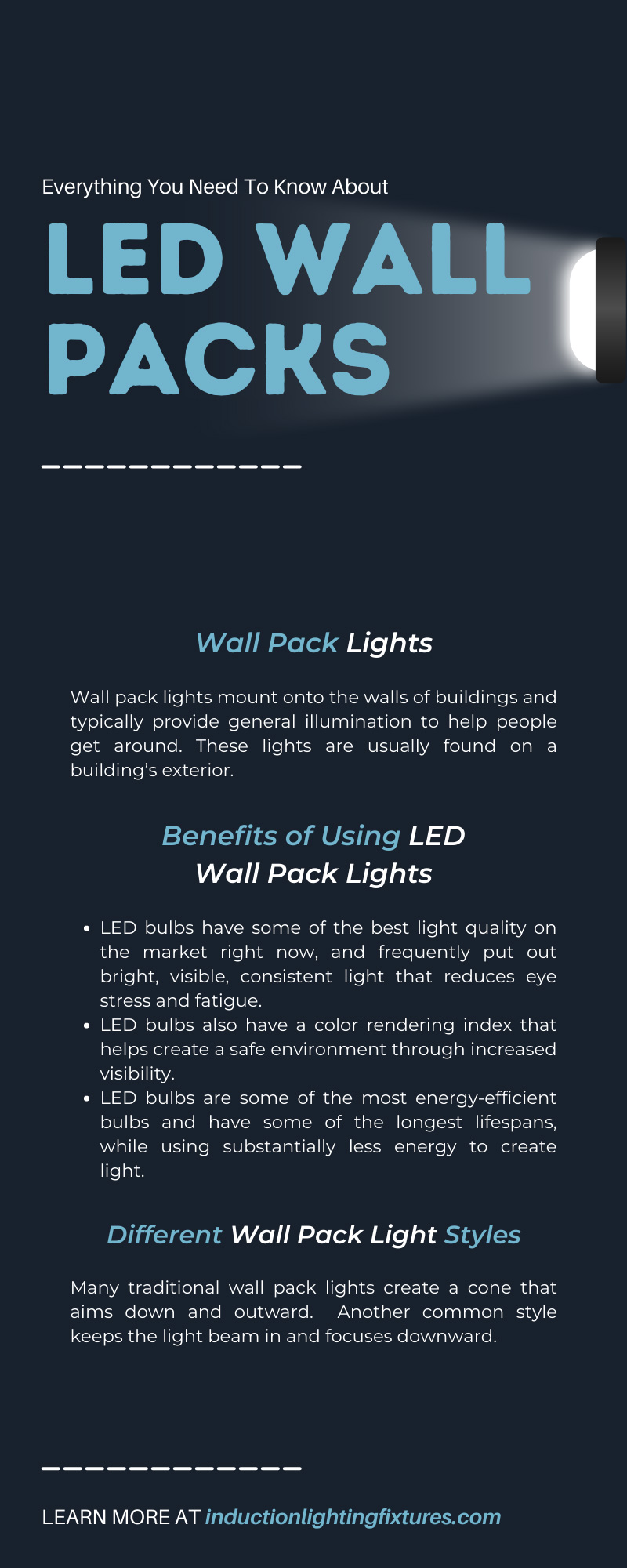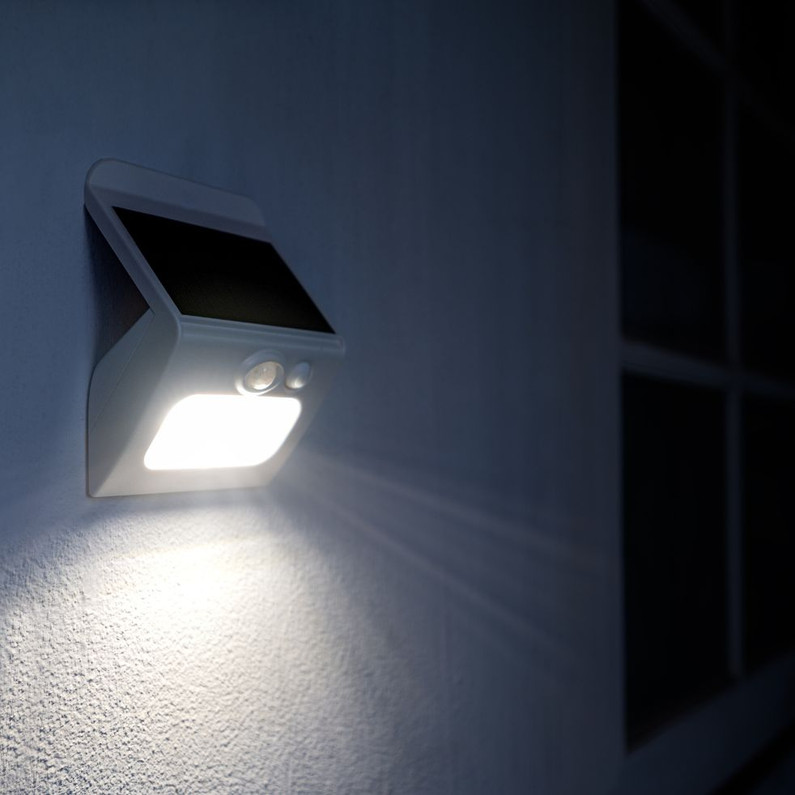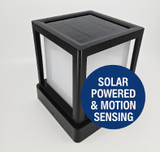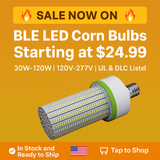Everything You Need To Know About LED Wall Packs
Whether you own or even frequent any type of commercial building, you’re likely to have seen wall pack lighting. A wall pack light is a type of wall-mounted fixture that typically aims toward the ground or floor. Wall packs serve a valuable purpose by providing lighting to walkways, paths, and other areas that pedestrians or vehicles should be mindful of.
There are many different styles and reasons to utilize these fixtures in commercial buildings. Consider everything you need to know about LED wall pack lighting and why they’re a solid investment for your business, office, or storage area.
Wall Pack Lights
Wall pack lights mount onto the walls of buildings and typically provide general illumination to help people get around. These lights are usually found on a building’s exterior. Still, they may benefit the interiors of industrial warehouses or areas where an interior light source is advantageous for safe movement. Because wall packs frequently act as signal lights, they often emit a warmer, more orange light that highlights areas rather than fully illuminating them.
Many older wall pack light models used high-pressure sodium lights, but newer models offer LED bulbs. More recent models also come in a wider selection of wattages, lumens, and color temperatures to allow installers or business owners to better control the intensity, power output, and light coloration of their exterior lighting.
LED Bulbs vs. Other Light Options
When looking at wall pack lighting, you may be able to tell which type of bulb they use based on the coloration, brightness, and sometimes even the sound they make. The most common bulbs found in older wall pack lights are sodium vapor lights, high-pressure sodium lights, and fluorescent lights. While many of these older options have their advantages, upgrading to LED fixtures down the road may be a good idea.
Sodium Vapor Lights
Many vapor bulbs emit a low, yellow light source that’s easy to identify. These fixtures are most common in warehouses, stadiums, and other large areas with higher ceilings. Notable downsides with sodium vapor lights are that their color frequently hinders visibility, they have an extensive warm-up period that makes them impractical, and semi-regular flickering, which indicates the end of a fairly short lifespan. Sodium vapor lights achieve high temperatures and use a lot of power to keep their heat going throughout the illumination process.
High-Pressure Sodium Lights
Before LED bulbs became a more standard option, high-pressure sodium bulbs were a leading player in wall pack lighting. HPS lights work for industrial, shipping, outdoor, and traditional business buildings and environments. HPS wall fixtures are cost-effective and have a relatively long lifespan compared to certain other options. However, many of the practical advantages that come with HPS bulbs are overshadowed by the abilities of an LED wall pack fixture. HPS bulbs also have a slow warm-up period, though it’s not as noticeable as that of sodium vapor lights.
Fluorescent Lighting
While many businesses and industrial areas still use fluorescent lighting, these bulbs are significantly less common in wall pack lighting fixtures. Fluorescent bulbs are long lasting and efficient with a strong coloration, but may exhibit audible buzzing, regular flickering, and a decreased lifespan when regularly turned on and off. Fluorescent bulbs have a reputation for containing harmful mercury, which is less of a concern when contained in a wall-mounted fixture, but still requires careful disposal when replacing. This is something businesses don’t have to deal with when utilizing LED lights.
Benefits of Using LED Wall Pack Lights
Everything you need to know about LED wall packs can be condensed to the distinct advantages of using LEDs over other types of bulbs on the market. HPS bulbs and fluorescent lighting have their own benefits, but they frequently pale compared to the benefits of an LED light fixture.
LED bulbs have some of the best light quality on the market right now, and frequently put out bright, visible, consistent light that reduces eye stress and fatigue. LED bulbs also have a color rendering index that helps create a safe environment through increased visibility.
LED bulbs are some of the most energy-efficient bulbs and have some of the longest lifespans, while using substantially less energy to create light. Because of their long lifespan—coupled with wall pack light fixtures consisting of a singular unit—LEDs typically require far less maintenance than other types of bulbs and fixtures, making LED lights and wall packs a good match.
One of the only downsides to LED bulb wall pack fixtures is that, compared to other options, they have a higher initial monetary investment. However, because of their low energy consumption and reduced maintenance, many business owners recoup the extra financial investments sooner rather than later.
Different Wall Pack Light Styles
One of the more difficult aspects of shopping for LED wall pack fixtures is figuring out which style is best for your commercial building. Wall pack lights come in different makes and models that help highlight buildings in different ways.
Many traditional wall pack lights create a cone that aims down and outward. This style is beneficial for illuminating pathways, and it helps when the fixture isn’t too high off the ground. Another common style keeps the light beam in and focuses downward. These specialized wall-mounted fixtures are great for highlighting signs, stairways, and emergency exits. If you have an open area, like a stadium or parking structure, wall-mounted floodlights are perfect for casting a wide beam across an open space and work best when installed at a higher vantage point.
Other Factors To Consider
While one of the most significant advantages of wall pack lights is their self-contained structure, some business owners may want to consider other options. For instance, certain wall pack lights come with solar panels, allowing businesses to use sustainable energy to help increase the lifespan of their bulbs. Other companies may utilize dawn-to-dusk fixtures that turn on automatically once night falls. It’s always a good idea to consider which lighting options work best for your business and how they can impact safety and efficiency wherever you choose to install them.
For more information on LED wall pack lights, Induction Lighting Fixtures is here for you. Our online catalog has a wide range of products with LED bulbs, solar panels, and other features that work for your commercial building needs. For any additional questions, comments, or concerns, please contact us anytime, and a member of our staff will be happy to assist you.

Recent Posts
-
How Long Will Solar Powered Lighting Operate in the Rain?
How Solar Light Fixtures Can Run for 10 Rainy Days If you’ve ever wondered how a Commercial solar li …Jul 30th 2025 -
Spotlight - The IL-SPG54 Smart Solar Walkway Light: Where Performance Meets Simplicity
Introducing the IL-SPG54 Smart Solar Walkway Light: Where Performance Meets Simplicity When it comes …Jun 16th 2025 -
Corn Bulb Sale - While supplies last!
⚡ Limited Time Sale – BLE Series Corn Lamps Starting at $24.99! Stock up now while supplies last – p …Jun 11th 2025






